Ditapis dengan
E-book People and Place : The West Coast of New Zealand's South Island in his…
The interaction between people and place is the basic ingredient of human history. The historians who interpret this complex and ever-changing relationship are inevitably bit players in the processes they seek to unravel. In settler societies the terms of the relationship are re-negotiated and the heightened awareness of the new and the different reshapes expectations and communal at…
- Edisi
- -
- ISBN/ISSN
- 9781760463458
- Deskripsi Fisik
- 216 hlm
- Judul Seri
- -
- No. Panggil
- 994 RIC p
E-book Coal Country : The Meaning and Memory of Deindustrialization in Postwa…
On Sunday 16 September 2018, several hundred people gathered by the Auchengeich Mining Disaster Memorial in the village of Moodiesburn, North Lanarkshire. They included retired miners, trade union representatives and local councillors alongside members of local football teams and a choir made up of schoolchildren. The annual memorial service is timed to…
- Edisi
- -
- ISBN/ISSN
- 9781912702589
- Deskripsi Fisik
- 322 hlm
- Judul Seri
- -
- No. Panggil
- 941.1 GIB c
E-book Disability in industrial Britain : A cultural and literary history of …
On 5 September 1908, Frank Eaves, a collier from Tonypandy in the Rhondda Fawr valley, south Wales, stood before Judge Bryn Roberts at Pontypridd County Court. Eaves had met with an accident while working underground in Blaen-clydach Colliery in 1906, when a stone of half a hundredweight had fallen on his foot. He had not worked since that time and had been in receipt of compensa-tion from the …
- Edisi
- -
- ISBN/ISSN
- 9781526124326
- Deskripsi Fisik
- 288 hlm
- Judul Seri
- -
- No. Panggil
- 941 BOH d
E-book The Power of Prophecy; Prince Dipanagara and The End of An Old Order i…
National hero, Javanese mystic, pious Muslim and leader of the ‘holy war’ against the Dutch between 1825 and 1830, the Yogyakarta prince, Dipanagara (1785-1855, otherwise known as Diponegoro), is pre-eminent in the pantheon of modern Indonesian historical figures. Yet despite instant name recognition in Indonesia, there has never been a full biography of the prince’s life and times based …
- Edisi
- -
- ISBN/ISSN
- 9789067183031
- Deskripsi Fisik
- 970 halaman, ilus.
- Judul Seri
- -
- No. Panggil
- 959.8 CAR t
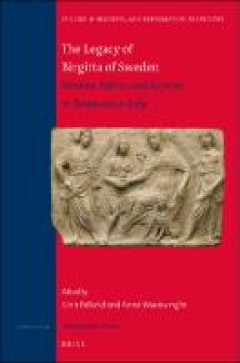
E-book The Legacy of Birgitta of Sweden: Women, Politics, and Reform in Renai…
Saint Birgitta of Sweden (d. 1373), one of the most famous visionary women of the late Middle Ages, lived in Rome for the last 23 years of her life. Much of her extensive literary work was penned there. Her Celestial Revelations circulated widely from the late 14th century to the 17th century, copied in Italian scriptoria, translated into vernacular, and printed in several Latin and Italian edi…
- Edisi
- -
- ISBN/ISSN
- 9789004540040
- Deskripsi Fisik
- 378 halaman, ilus.
- Judul Seri
- -
- No. Panggil
- 930.1 FAL t

E-book Literature and the Work of Universality
In an age of accelerating ecological crises, global inequalities and democratic fragility, it has become crucial to achieve renewed articulations of human commonality. With anchorage in critical theory as well as world literary studies, this volume approaches literature – and modes of literary thinking – as a key resource for such a task.
- Edisi
- -
- ISBN/ISSN
- 9783111209159
- Deskripsi Fisik
- 343
- Judul Seri
- -
- No. Panggil
- 802 DUH l
E-book Encyclopedia of African History, Volume 1 A-G
Covering the entire continent from Morocco, Libya, and Egypt in the north to the Cape of Good Hope in the south, and the surrounding islands from Cape Verde in the west to Madagascar, Mauritius, and Seychelles in the east, the Encyclopedia of African History is a new A-Z reference resource on the history of the entire African continent. With entries ranging from the earliest evolution of human …
- Edisi
- -
- ISBN/ISSN
- 9781579582451
- Deskripsi Fisik
- 1864 halaman, ilus.
- Judul Seri
- -
- No. Panggil
- 960 SHI e
E-book Fraternal Bonds in the Early Middle Ages
Until recently relations among siblings did not attract much interest among scholars studying the history of the early medieval family. They were mentioned primarily in discussions of marriage strategies used to safeguard the interests of family groups and in analyses of relations between families linked by marriage. Fraternal relations appeared as a research topic …
- Edisi
- -
- ISBN/ISSN
- 9781802701234
- Deskripsi Fisik
- 264 hlm
- Judul Seri
- -
- No. Panggil
- 940 PIE f
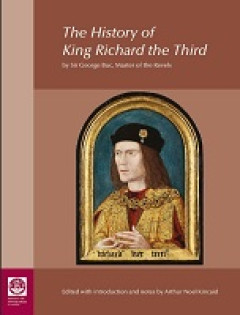
E-book The History of King Richard the Third: by Sir George Buc, Master of th…
Sir George Buc (1560-1622), one of the careful antiquarian scholars of the English Renaissance, is famous in literary history as Master of Revels under King James I. In 1619 Sir George wrote The History of King Richard the Third, a study of Richard’s life and reign and a defence of his historical reputation. In the late 1960s/early 1970s Arthur Kincaid embarked on creating the first authentic…
- Edisi
- -
- ISBN/ISSN
- 9780854313044
- Deskripsi Fisik
- 565 halaman, ilus.
- Judul Seri
- -
- No. Panggil
- 936 KIN t

E-book Visualizing The Invisible with The Human Body
Physiognomy and ekphrasis are two of the most important modes of description in antiquity and represent the necessary precursors of scientific description. The primary way of divining the characteristics and fate of an individual, whether inborn or acquired, was to observe the patient’s external characteristics and behaviour. This volume focuses initially on two types of descriptive literatur…
- Edisi
- -
- ISBN/ISSN
- 9783110642681
- Deskripsi Fisik
- 509 halaman
- Judul Seri
- -
- No. Panggil
- 138 JOH v
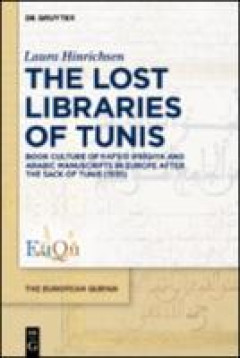
E-book The Lost Libraries of Tunis: Book Culture of Hafsid Ifriqiya and Arabi…
The libraries of Tunis are considered lost since the sack of the city by European armies in 1535. This study reconstructs the original holdings of Tunis’ medieval libraries by bringing together dispersed manuscripts from over 30 library collections worldwide. The outcome is twofold: the book maps the networks of the first European Orientalists and, by doing so, retrieves from oblivion an impo…
- Edisi
- -
- ISBN/ISSN
- 9783111343631
- Deskripsi Fisik
- 300 halaman, ilus.
- Judul Seri
- -
- No. Panggil
- 939.4 HIN t

E-book Muhammad and His Followers in Context: The Religious Map of Late Antiq…
This title is published in Open Access with the support of the University of Helsinki Library. The book surveys and analyzes changes in religious groups and identities in late antique Arabia, ca. 300-700 CE. It engages with contemporary and material evidence: for example, inscriptions, archaeological remains, Arabic poetry, the Qur??n, and the so-called Constitution of Medina. Also, it suggests…
- Edisi
- -
- ISBN/ISSN
- 9789004687134
- Deskripsi Fisik
- 390 halaman, ilus.
- Judul Seri
- -
- No. Panggil
- 297.6 LIN m
E-book At the Shores of the Sky : Asian Studies for Albert Hoffstädt
Albert Hoffstädt was the architect of a unique cooperation between Brill pub-lishers and the Leiden Department of Comparative Indo-European Linguis-tics, a cooperation that has so far resulted in a series of twelve etymological dictionaries and an online publication of fifteen etymological databases (). In all the years that Albert was directly involved …
- Edisi
- -
- ISBN/ISSN
- 9789004438200
- Deskripsi Fisik
- 324 hlm
- Judul Seri
- -
- No. Panggil
- 950 BOW a
E-book Yosano Akiko and The Tale of Genji
Some people are one-book people; their lives and their workare dominated, usually with conscious complicity, by a single book.William Pitt, first Earl of Chatham (1708-78), seems to have found a"politician's vade-mecum" in Spenser's Faerie Queene.1 Umberto Eco,despite the vast range of reference apparent in all that he writes, in-sists that the guiding star of it all is…
- Edisi
- -
- ISBN/ISSN
- 9780472902002
- Deskripsi Fisik
- 235 hlm
- Judul Seri
- -
- No. Panggil
- 902 ROW y
E-book Labouring with Large Stones : A study into the investment and impact o…
Considering their imposing nature, this study thus aims to find out how the communities coped with the investments associated with manufacturing the buildings. Analysing the cost of large-scale construction for a society has been researched before (e.g. Abrams and Bolland 1999, who focused on Central America), but few have made Mycenaean Greece the primary focus of such…
- Edisi
- -
- ISBN/ISSN
- 9789464280111
- Deskripsi Fisik
- 198 hlm
- Judul Seri
- -
- No. Panggil
- 939.4 BOS l
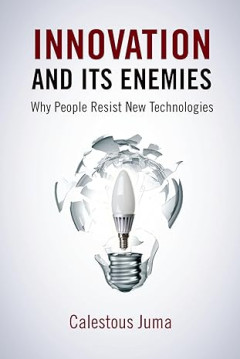
E-book Innovation and Its Enemies: Why People Resist New Technologies
It is a curious situation that technologies we now take for granted have, when first introduced, so often stoked public controversy and concern for public welfare. At the root of this tension is the perception that the benefits of new technologies will accrue only to small sections of society, while the risks will be more widely distributed. Drawing from nearly 600 years of technology histor…
- Edisi
- -
- ISBN/ISSN
- 9780190467036
- Deskripsi Fisik
- 433 halaman, ilus.
- Judul Seri
- -
- No. Panggil
- 338 JUM i
E-book Song of Exile: A Cultural History of Brazil’s Most Popular Poem, 184…
Song of Exile: A Cultural History of Brazil’s Most Popular Poem, 1846–2018 is the first comprehensive study of the influence of Antônio Gonçalves Dias’s “Canção do exílio.” Written in Coimbra, Portugal, in 1843 by a homesick student longing for Brazil, “Song of Exile” has inspired thousands of parodies and pastiches, and new variations continue to appear to this day. Every ge…
- Edisi
- -
- ISBN/ISSN
- 9781612496917
- Deskripsi Fisik
- 232 halaman
- Judul Seri
- -
- No. Panggil
- 981 ENS s
E-book The Bible in Buffalo Country : Oenpelli Mission 1925–1931
In this book we share the rich documentary and photographic sources from the early years of the Oenpelli mission. Though it consists mainly of records produced by non-Indigenous missionaries, we consider this book a book of Aboriginal history. Why? The letters, reports and photographs that form its core were produced by missionaries who sought to convert and change Aboriginal peop…
- Edisi
- -
- ISBN/ISSN
- 9781760463991
- Deskripsi Fisik
- 332 hlm
- Judul Seri
- -
- No. Panggil
- 994 MAY t

E-book The End of the Cold War and The Third World: New Perspectives on Regio…
This book brings together recent research on the end of the Cold War in the Third World and engages with ongoing debates about regional conflicts, the role of great powers in the developing world, and the role of international actors in conflict resolution. Most of the recent scholarship on the end of the Cold War has focused on Europe or bilateral US-Soviet relations. By contrast, relatively l…
- Edisi
- -
- ISBN/ISSN
- 9780203816749
- Deskripsi Fisik
- 328 halaman, ilus.
- Judul Seri
- -
- No. Panggil
- 909.09 KAL t

E-book Writing from Invention to Decipherment
This book corrals global scholarship on ancient writing systems from China, Mesopotamia, Central America, the Mediterranean, to more recent newly created scripts such as the Rongorongo from Easter Island, the Caroline Island scripts, as well as the alphabet. The aim is to dig into the foundations of writing and showcase the complexities and varieties of scripts, from their invention to the pote…
- Edisi
- -
- ISBN/ISSN
- 9780198908746
- Deskripsi Fisik
- 349 halaman, ilus.
- Judul Seri
- -
- No. Panggil
- 930 FER w
E-book Czech Broadside Ballads as Text, Art, Song in Popular Culture, c.1600�…
This landmark collection of essays makes a major contribution to the globally burgeoning f ield of broadside ballad study by extending our gaze to include the largely underexplored treasure trove of some 100,000 Central/Eastern European broadside ballads of the Czech Republic, from the beginning of the sixteenth to the end of the nineteenth centuries. Czech broadside ballads, when viewed within…
- Edisi
- -
- ISBN/ISSN
- 9789463721554
- Deskripsi Fisik
- 500 hlm
- Judul Seri
- -
- No. Panggil
- 943.7 FUM c
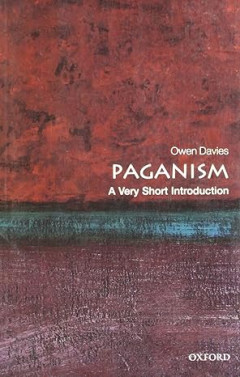
E-book Paganism: A Very Short Introduction
"Paganism" is an evocative word that even today conjures up deep-seated emotions and prejudices. Until recently, it was primarily a derogatory term used by Christians to describe the non-Christian cultures vanquished by their churches. For some it evokes images of sacrifice and barbaric behavior, while for others it symbolizes a peace-loving, nature-worshipping spiritual relationship with the e…
- Edisi
- -
- ISBN/ISSN
- 9780199235162
- Deskripsi Fisik
- 337 halaman, ilus.
- Judul Seri
- -
- No. Panggil
- 202 DAV p
E-book Maria Thereza Alves : Seeds of Change
In an era of extractivist economies, climate change, and forced mobil-ity, who and what belongs? Who and what does not? What can be learned from sitting with a plant you germinated from seed? One of the most significant voices to emerge in recent years, Brazil-born Maria 'lhereza Alves has focused precisely on such questions in her twenty-year art project Seeds o/Change that has spanned contine…
- Edisi
- -
- ISBN/ISSN
- 9781943208494
- Deskripsi Fisik
- 220 hlm
- Judul Seri
- -
- No. Panggil
- 902 KUO m
E-book Water and the Law : Water Management in the Statutory Legislation of L…
A recent report by the World Meteorological Organization updated to January 2022 showed that around 11% of the world’s population has no access to sufficiently safe sources of water. In addition, drought in some regions of Africa, Central Asia and the American continent is hastening the expansion of the desert belts and is causing serious difficulties in a growing…
- Edisi
- -
- ISBN/ISSN
- 9781803277370
- Deskripsi Fisik
- 178 hlm
- Judul Seri
- -
- No. Panggil
- 940 SAL w
E-book The Social Drama of Daily Work : A Manual for Historians
A second reason to study work is that it is inherently social: it necessarily involves relations between people that are arguably more fundamental than their ideological relationships. Since work must go on, while ideology may be ignored or even f louted, it is a good place to start trying to understand society. Applebaum argued that the study of work is even more important for studying societi…
- Edisi
- -
- ISBN/ISSN
- 9789048559534
- Deskripsi Fisik
- 194 hlm
- Judul Seri
- -
- No. Panggil
- 902 SCH t
E-book Yuarn Music Dramas : Studies in Prosody and Structure and a Complete C…
The term shie-tzyy was appropriated from the Chinese car-penter, to whom it denoted a small wedge-shaped cut of wood usedto fill a crack or cleavage in an article of furniture. With similarprecision, the Yuarn dramatist could always turn to the demi-actfor a flexible alternative to the simple four-act format of the stan-dard music drama.…
- Edisi
- -
- ISBN/ISSN
- 9780472901470
- Deskripsi Fisik
- 399 hlm
- Judul Seri
- -
- No. Panggil
- 902 JOH y
E-book Cultural and Civilisational Links between India and Southeast Asia
The books presents the study undertaken by the ASEAN-India Centre (AIC) at Research and Information System for Developing Countries (RIS) on India’s cultural links with Southeast Asia, with particular reference to historical and contemporary dimensions. The book traces ancient trade and maritime links, Chola Empire and Southeast Asia, religious exchanges (the Hindu, Buddhist and Islamic he…
- Edisi
- -
- ISBN/ISSN
- 9789811073168
- Deskripsi Fisik
- 375 halaman, ilus.
- Judul Seri
- -
- No. Panggil
- 959 SAR c
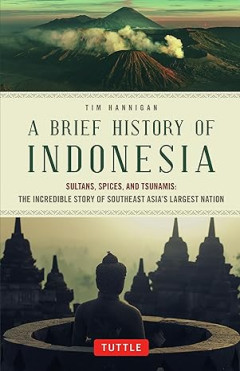
E-book A Brief History of Indonesia: Sultans, Spices, and Tsunamis: The Incre…
Indonesia is by far the largest nation in Southeast Asia and has the fourth largest population in the world after the United States. Indonesian history and culture are especially relevant today as the Island nation is an emerging power in the region with a dynamic new leader. It is a land of incredible diversity and unending paradoxes that has a long and rich history stretching back a thousand …
- Edisi
- -
- ISBN/ISSN
- 9780804844765
- Deskripsi Fisik
- 251 halaman, ilus.
- Judul Seri
- -
- No. Panggil
- 959.8 HAN a
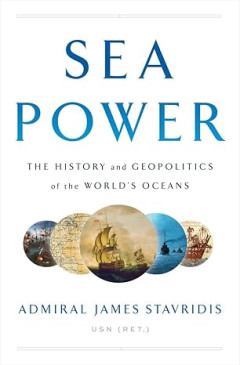
E-book Sea Power: The History and Geopolitics of the World's Oceans
From one of the most admired admirals of his generation—and the only admiral to serve as Supreme Allied Commander at NATO—comes a remarkable voyage through all of the world’s most important bodies of water, providing the story of naval power as a driver of human history and a crucial element in our current geopolitical path. From the time of the Greeks and the Persians clashing in th…
- Edisi
- -
- ISBN/ISSN
- 9780735220591
- Deskripsi Fisik
- 295 halaman, ilus.
- Judul Seri
- -
- No. Panggil
- 359 STA s
E-book The Spanish Connection : French and Flemish Merchant Networks in Sevil…
During the time of Spanish splendor, at the peak of the Spanish Indies trade,the position of the rich merchants in Seville was remarkably strong. ?ey resid-ed at the hub between the European and the American economy and the com-mercial opportunities seemed endless. Based on recent literature and abundantsource material, this chapter gives a survey of the economic and social struc-ture of the ci…
- Edisi
- -
- ISBN/ISSN
- 9783412225360
- Deskripsi Fisik
- 458 hlm
- Judul Seri
- -
- No. Panggil
- 946 CRA t
E-book Martin Waldseemüller’s 'Carta marina' of 1516 : Study and Transcrip…
This book is devoted to an imposing world map, printed on twelve sheets and rich in detail, that was designed by the Germancartographer Martin Waldseemüller in 1516, whose only surviving exemplar is in the Jay I. Kislak Collection at the Libraryof Congress. This map, theCarta marina, has tended to live in the shadow of Waldseemüller’s earlier world map, thatprinted in 1507, which is famous …
- Edisi
- -
- ISBN/ISSN
- 9783030227036
- Deskripsi Fisik
- 155 hlm
- Judul Seri
- -
- No. Panggil
- 940 VAN m
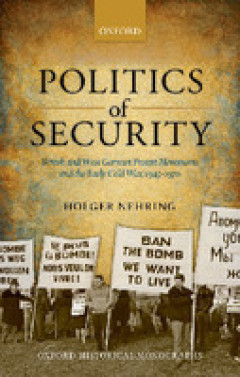
E-book Politics of Security: British and West German Protest Movements and th…
The Politics of Security tells the story of how people experienced the cold war as a war. It is about the impact of the cold war on political cultures. This crucial issue is often forgotten in historical memory. In particular, the book follows British and West German anti-nuclear-weapons activists in their attempts to campaign for and create security after the destruction of the Second World Wa…
- Edisi
- -
- ISBN/ISSN
- 9780199681228
- Deskripsi Fisik
- 342 halaman
- Judul Seri
- -
- No. Panggil
- 940.54 NEH p
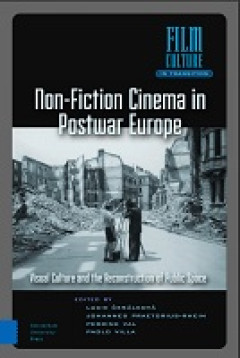
E-book Non-Fiction Cinema in Postwar Europe: Visual Culture and the Reconstru…
After WWII, cinema was everywhere: in movie theatres, public squares, factories, schools, trial courts, trains, museums, and political meetings. Seen today, documentaries and newsreels, as well as the amateur production, show the kaleidoscopic portrait of a changing Europe. How did these cinematic images contribute to shaping the new societies emerging from the ashes of war, both in the Western…
- Edisi
- -
- ISBN/ISSN
- 9789048556625
- Deskripsi Fisik
- 520 halaman
- Judul Seri
- -
- No. Panggil
- 778.534 CES n
E-book Northeastern Asia and the Northern Rockies : Treasures from the Los An…
his exhibition, Northeastern Asia and the Northern Rockies, has been conceived as an introduction in four parts that will help visitors to the museum and scholars of the university understand key elements of both traditional and current Northeastern Asian native and migrant cultures. The first three parts of the exhibition introduce fundamen-tal concepts inherent in Daoism, Confucian…
- Edisi
- -
- ISBN/ISSN
- 9781685711177
- Deskripsi Fisik
- 325 hlm
- Judul Seri
- -
- No. Panggil
- 902 LIT n
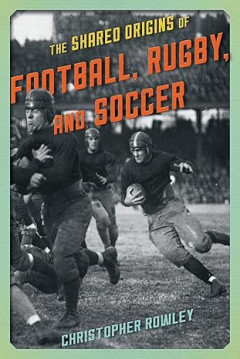
E-book The Shared Origins of Football, Rugby, and Soccer
In today’s hypercompetitive world, contact sports bring about fierce rivalries between fans, between players, and even between countries. From the Ohio State Buckeyes and the Michigan Wolverines in grid iron football, to the Australian Wallabies and the New Zealand All Blacks in rugby, to Real Madrid and Barcelona in association football (soccer), contact sports incite a passion few other gam…
- Edisi
- -
- ISBN/ISSN
- 9781442246188
- Deskripsi Fisik
- 262 halaman, ilus.
- Judul Seri
- -
- No. Panggil
- 796.309 ROW t

E-book Rethinking the Andes–Amazonia Divide : A cross-disciplinary exploration
Maps in this book were reproduced by Paul Heggarty from maps provided by chapter authors, by converting them into a GIS (Geographic Information System) database, collated and enriched for South America for the purposes of this book. All data used on the maps are thus geo- referenced – set to actual latitude and longitude coordi-nates – as precisely as possible. Individual p…
- Edisi
- -
- ISBN/ISSN
- 9781787357358
- Deskripsi Fisik
- 421 hlm
- Judul Seri
- -
- No. Panggil
- 980 PEA r
E-book Talking Dialogue : Eleven Episodes in the History of the Modern Interr…
The last two decades have seenadynamic increase in the number of activitiesthat are explicitlylinked to the notion of interreligious dialogue (IRD). All overthe world, empirical research projects underlinethe establishment of highlycomplex local scenes of these types of initiatives.¹Especiallyatthe nationallevel, it is possibleto identifyasignificant increase in dialogue organizations–either…
- Edisi
- -
- ISBN/ISSN
- 9783110529173
- Deskripsi Fisik
- 389 hlm
- Judul Seri
- -
- No. Panggil
- 939.4 BAR t
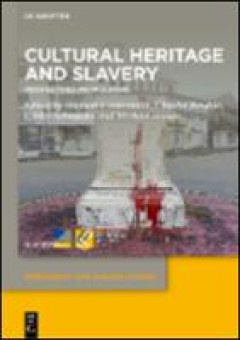
E-book Cultural Heritage and Slavery: Perspectives from Europe
In the recent cultural heritage boom, community-based and national identity projects are intertwined with interest in cultural tourism and sites of the memory of enslavement. Questions of historical guilt and present responsibility have become a source of social conflict, particularly in multicultural societies with an enslaving past. This became apparent in the context of the Black Lives Matte…
- Edisi
- -
- ISBN/ISSN
- 9783111331492
- Deskripsi Fisik
- 352 halaman
- Judul Seri
- -
- No. Panggil
- 930.1 CON c
E-book Mnemonic Solidarity : Global Interventions
This volume introduces a new publication series and a new emphasis in memory studies. The title of the series is Entangled Memories in the Global South. The term “mnemonic solidarity” which gives this book its title signals one response to the observation that historical memories have become entangled. It proposes that that entanglement invites us to rethink memory stu…
- Edisi
- -
- ISBN/ISSN
- 9783030576691
- Deskripsi Fisik
- 144 hlm
- Judul Seri
- -
- No. Panggil
- 902 ERA m
E-book Warlords of Ancient Mexico: How the Mayans and Aztecs Ruled for More T…
Learn the unbelievable true history of the great warrior tribes of Mexico. More than thirteen centuries of incredible spellbinding history are detailed in this intriguing study of the rulers and warriors of Mexico. Dozens of these charismatic leaders of nations and armies are brought to life by the deep research and entertaining storytelling of Peter Tsouras. Tsouras introduces the reader…
- Edisi
- -
- ISBN/ISSN
- 9781629144597
- Deskripsi Fisik
- 405 halaman, ilus.
- Judul Seri
- -
- No. Panggil
- 972 TSO w
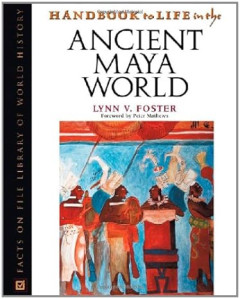
E-book Handbook to Life in the Ancient Maya World
Presents the latest archaeological and historical research on all aspects of Maya society, from its earliest beginnings to the Spanish Conquest in the 16th century.
- Edisi
- -
- ISBN/ISSN
- 9780816041480
- Deskripsi Fisik
- 416 halaman
- Judul Seri
- -
- No. Panggil
- 970.3 FOS h
E-book The Malay Archipelago
A century and a half after it was first published, this book remains one of the great classics of natural history and travel—perhaps the greatest. Alfred Russel Wallace (1823-1913) deserves equal billing with Charles Darwin for his independently drawn but parallel conclusions on the theory of evolution. Darwin himself called Wallace "generous and noble" and referred favorably to his work in l…
- Edisi
- -
- ISBN/ISSN
- 9780794605636
- Deskripsi Fisik
- 600 halaman, ilus.
- Judul Seri
- -
- No. Panggil
- 959 WAL t
E-book The Medieval Economy of Salvation : Charity, Commerce, and the Rise of…
It was a cold winter evening in 2010, and I had just arrived in Paris for a short research trip. The tiny hotel where I would be staying was on the fifth floor of the ophthalmological wing of the hôtel-Dieu (or hospital) just across from the cathedral of Notre Dame. 1 Given the subject of the book I was in France to research, it seemed appropri-ate that I should s…
- Edisi
- -
- ISBN/ISSN
- 9781501742118
- Deskripsi Fisik
- 336 hlm
- Judul Seri
- -
- No. Panggil
- 909.5 DAV t

E-book History of Yugoslavia
Why did Yugoslavia fall apart? Was its violent demise inevitable? Did its population simply fall victim to the lure of nationalism? How did this multinational state survive for so long, and where do we situate the short life of Yugoslavia in the long history of Europe in the twentieth century? The Complete History of Yugoslavia by Marie-Janine Calic provides a concise, accessible, comprehensive…
- Edisi
- -
- ISBN/ISSN
- 9781557538499
- Deskripsi Fisik
- 443 halaman
- Judul Seri
- -
- No. Panggil
- 949.7 CAL h
E-book Borderblur Poetics : Intermedia and Avant-Gardism in Canada, 1963-1988
“This is the death of the poem as I have faithfully reported it, November 29, 1966, as I have faithfully reported it, this is the death of the poem” in-tones Canadian poet bpNichol one day after the Dominion Day celebrations marking Canada’s centennial year. Addressing a national television audi-ence, Nichol reads these lines with poets bill bissett an…
- Edisi
- -
- ISBN/ISSN
- 9781773854588
- Deskripsi Fisik
- 299 hlm
- Judul Seri
- -
- No. Panggil
- 909.82 SCH b
E-book Migrant Ecologies : Environmental Histories of the Pacific World
The creation of—or even the existence of—a “Pacific World” is a question that has preoccupied scholars to a much greater degree than existential doubts have bothered historians of other oceanic basins. Economic historian Eric Jones and colleagues have written that “there can be no meaningful history ofthe whole Rim or Basin [ofthe Pacific] since there…
- Edisi
- -
- ISBN/ISSN
- 9780824892258
- Deskripsi Fisik
- 321 hlm
- Judul Seri
- -
- No. Panggil
- 990 BEA m
E-book Framing the Islands : Power and Diplomatic Agency in Pacific Regionalism
This book tells the story of power and diplomatic agency in Pacific regionalism against the backdrop of a changing global order and a changing political situation within Pacific societies and states. Its purpose is to explore the political significance of this region-building activity for Pacific societies and its political meaning withi…
- Edisi
- -
- ISBN/ISSN
- 9781760463151
- Deskripsi Fisik
- 418 hlm
- Judul Seri
- -
- No. Panggil
- 990 FRY f
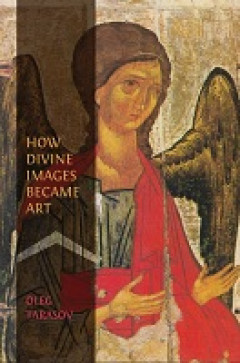
E-book How Divine Images Became Art: Essays on the Rediscovery, Study and Col…
How Divine Images Became Art tells the story of the parallel ‘discovery’ of Russian medieval art and of the Italian ‘primitives’ at the beginning of the twentieth century. While these two developments are well-known, they are usually studied in isolation. Tarasov’s study has the great merit of showing the connection between the art world in Russia and the West, and its impact in the c…
- Edisi
- -
- ISBN/ISSN
- 9781805111580
- Deskripsi Fisik
- 230 halaman
- Judul Seri
- -
- No. Panggil
- 930.1 ROC h
E-book Vietnam Task : The 5th Battalion, The Royal Australian Regiment, 1966�…
Every man sees a war in which he fights from two points of view. The one is his own, his view of his personal life in relation to the harsh environment of battle; the other is the outlook of his unit which makes him share closely the corporate experience of this unit and gives that unit an individual entity and character with its own peculiar difficulties and joys, its…
- Edisi
- -
- ISBN/ISSN
- 9781760465384
- Deskripsi Fisik
- 313 hlm
- Judul Seri
- -
- No. Panggil
- 994 ONE v
E-book The Corporation as a Protagonist in Global History, c. 1550-1750
For almost two decades, historians and academics from a wide- range of sub- disciplinary backgrounds have been situating their research within a global context, crossing boundaries both geographically and methodologically, in such large numbers as to necessitate the emergence of a recognisably new field of enquiry: Global History. From comparative to connective histories, the …
- Edisi
- -
- ISBN/ISSN
- 9789004387850
- Deskripsi Fisik
- 343 hlm
- Judul Seri
- -
- No. Panggil
- 909.5 PET t
 Karya Umum
Karya Umum  Filsafat
Filsafat  Agama
Agama  Ilmu-ilmu Sosial
Ilmu-ilmu Sosial  Bahasa
Bahasa  Ilmu-ilmu Murni
Ilmu-ilmu Murni  Ilmu-ilmu Terapan
Ilmu-ilmu Terapan  Kesenian, Hiburan, dan Olahraga
Kesenian, Hiburan, dan Olahraga  Kesusastraan
Kesusastraan  Geografi dan Sejarah
Geografi dan Sejarah